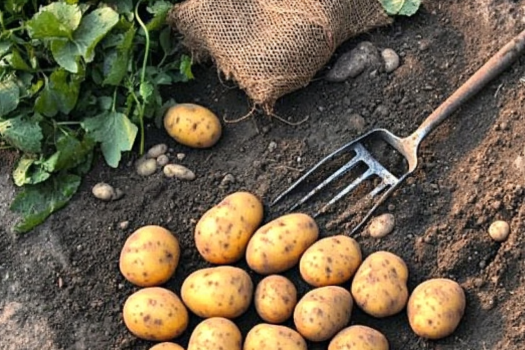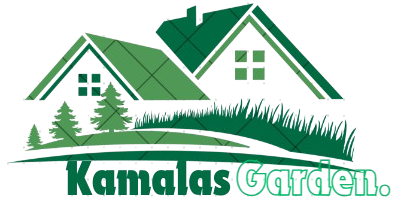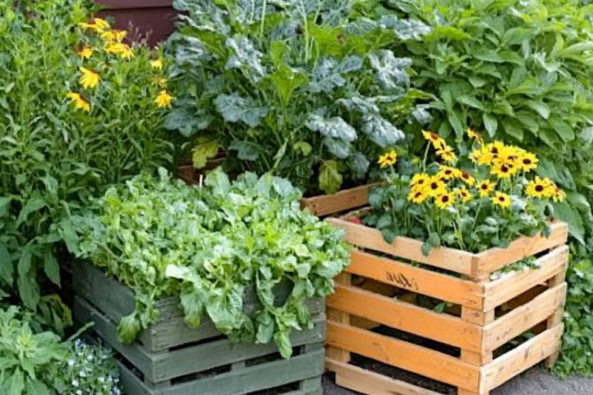Why Grow Vegetables in Pots?
Benefits of Container Gardening
Growing vegetables in pots offers several advantages, especially for those with limited space. Here are some key benefits:
- Space-efficient: Ideal for balconies, patios, or small yards.
- Mobility: Move pots to optimize sunlight exposure.
- Pest Control: Easier to protect plants from soil-borne diseases and pests.
- Soil Control: Customize soil mix for different vegetable needs.
- Year-round Gardening: Grow vegetables indoors during colder months.
Ideal Conditions for Growing Vegetables in Pots
To ensure a thriving container garden, consider these factors:
- Sunlight: Most vegetables need at least 6–8 hours of direct sunlight daily.
- Soil Quality: Use high-quality potting mix enriched with organic matter.
- Watering Needs: Consistent watering is essential since pots dry out faster.
- Drainage: Ensure pots have drainage holes to prevent root rot.
Choosing the Right Containers for Vegetable Gardening
Best Materials: Plastic, Clay, Fabric Pots, etc.
Choosing the right container material is crucial for plant health. Here are some common options:
- Plastic pots: Lightweight, affordable, and retain moisture well.
- Clay/Terracotta pots: Breathable but dry out quickly.
- Fabric grow bags: Great for root aeration and drainage.
- Wooden planters: Natural look but may require treatment to prevent rot.
The Importance of Drainage and Soil Quality
- Ensure drainage holes to prevent waterlogging.
- Use a light, well-draining potting mix rather than garden soil.
- Add compost or organic fertilizers for nutrient-rich soil.
10+ Best Vegetables to Grow in Pots

1. Tomatoes (Solanum lycopersicum)
Tomatoes are one of the best vegetables to grow in containers.
- Best varieties for pots: Cherry tomatoes (e.g., ‘Sweet 100’), ‘Patio Princess’, ‘Roma’.
- Care Tips:
- Use a 5-gallon container for each plant.
- Provide cages or stakes for support.
- Water consistently to prevent cracking.
2. Peppers (Capsicum annuum)
Both bell peppers and chili peppers thrive in pots.
- Sunlight & Watering Needs:
- At least 6–8 hours of sun daily.
- Keep soil moist but not waterlogged.
3. Lettuce and Leafy Greens (Lactuca sativa, Kale, Spinach, Arugula)
Perfect for small spaces and continuous harvest.
- Fast-growing varieties: ‘Black Seeded Simpson’, ‘Buttercrunch’, ‘Red Russian’ kale.
- Harvest method: Cut outer leaves to allow continuous growth.
4. Carrots (Daucus carota)
Carrots need deeper pots for proper root development.
- Best container depth: 12 inches or more.
- Best varieties: ‘Parisian’, ‘Little Finger’, ‘Nantes’.
5. Beans (Phaseolus vulgaris)
Bush beans and pole beans are great choices for container gardening.
- Support Needs:
- Bush beans: No support needed.
- Pole beans: Use trellises for vertical growth.
6. Cucumbers (Cucumis sativus)
Cucumbers grow well in pots with proper support.
- Bush vs. Vine Cucumbers:
- Bush varieties like ‘Bush Pickle’ are best for small containers.
- Vining varieties need trellises.
7. Radishes (Raphanus sativus)
A fast-growing root vegetable that thrives in small spaces.
- Best soil mix: Loose, well-draining soil for proper root growth.
- Harvest time: Ready in 3–4 weeks.
8. Peas (Pisum sativum)
Peas grow well in cool seasons and require minimal maintenance.
- Best containers: 12-inch deep pots with a trellis.
- Best varieties: Sugar snap, snow peas, English peas.
9. Eggplant (Solanum melongena)
Eggplants thrive in warm temperatures and need full sun.
- Best varieties: ‘Fairy Tale’, ‘Patio Baby’, ‘Little Fingers’.
- Container Size: 5-gallon pots for optimal growth.
10. Potatoes (Solanum tuberosum)

Growing potatoes in containers is a great way to maximize space.
- How to plant:
- Use large grow bags or 10+ gallon pots.
- Use layering method: Add soil as plants grow to increase yield.
Extra Tips for Successful Container Vegetable Gardening
Organic vs. Synthetic Fertilizers for Potted Plants
- Organic options: Compost tea, fish emulsion, bone meal.
- Synthetic options: Balanced liquid fertilizers (10-10-10 NPK).
- Tip: Feed plants every 2–3 weeks for best results.
Companion Planting for Pest Control
Certain plants help each other thrive when grown together:
- Basil & tomatoes: Enhances flavor and repels pests.
- Carrots & onions: Repels carrot flies.
- Marigolds & beans: Deters aphids and nematodes.
Common Mistakes to Avoid in Container Gardening
- Overwatering: Leads to root rot; check soil moisture before watering.
- Using garden soil: Too heavy for pots; use potting mix.
- Ignoring sunlight needs: Move pots as needed for maximum exposure.
What Else Can You Grow in Pots?
Best Herbs for Container Gardening
- Basil, mint, thyme, oregano, and rosemary thrive in pots.
Small Fruit Plants Suitable for Pots
- Strawberries, blueberries, dwarf citrus trees, and figs are great options.
Related Posts You May Like
- How to Grow Herbs in Small Spaces
- 10 Easy Vegetables for Beginners to Grow at Home
- Best Container Gardening Ideas for Small Yards & Balconies
For more container gardening tips, check out this guide on vegetables to grow in pots.
By choosing the right vegetables and providing proper care, you can enjoy a productive and thriving potted garden, no matter how small your space!

